★A Piece of Trivia
It is said that the term "lens" was derived from "lentil," which is usually eaten in Europe.
Lenses that make an object look bigger or that enable far-away objects to be seen closer, have been used for more than 2000 years. Some lenses made of polished crystal have been found from the remains of ancient Egypt and Rome. Moreover, it is said that lenses had already been used as a magnifier from around the 2nd century in Europe. In around the 13th century, lenses also came to be used as eyeglasses before being used in a variety of tools such as telescopes, microscopes, and cameras.
But why does an object look bigger or far-away object seem closer by just looking through a lens? Let's see how it works!

★A Piece of Trivia
It is said that the term "lens" was derived from "lentil," which is usually eaten in Europe.
First, let's learn about the characteristics of "light" that are crucial when getting knowledge about the mechanism of lenses. One of the characteristics of light is the ability to travel in a straight manner and bounce off in a different direction when hitting an object such as a flat mirror. This phenomenon is called reflection. When light is reflected, the incidence angle, which is an angle of the light coming in, and the reflection angle, which is an angle of the reflected light, are equal.
The speed of light is slower in glass or in water as compared to its speed in air. Consequently, when light travels from air into a different substance obliquely, the traveling direction changes at the boundary. This phenomenon is called refraction. For example, when light enters a water surface from air, the incidence angle is bigger than the refraction angle. In contrast, when light travels from water into air, the incidence is smaller than the refraction angle.
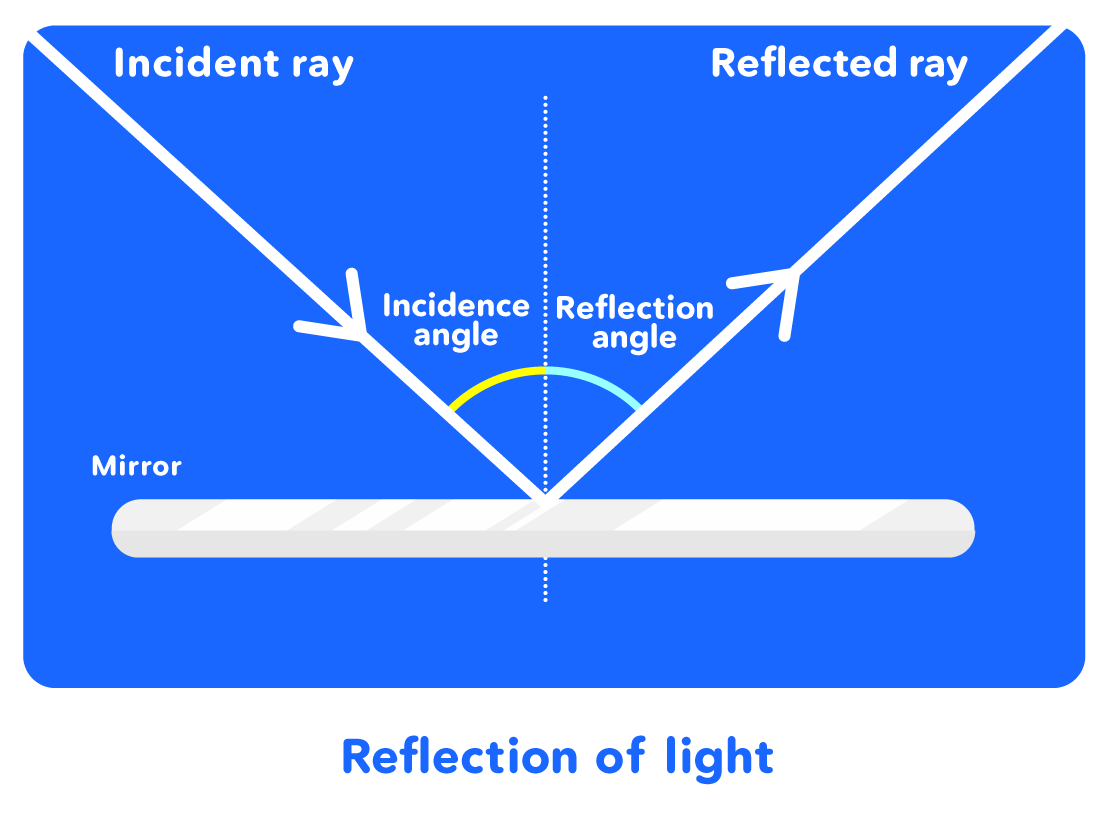
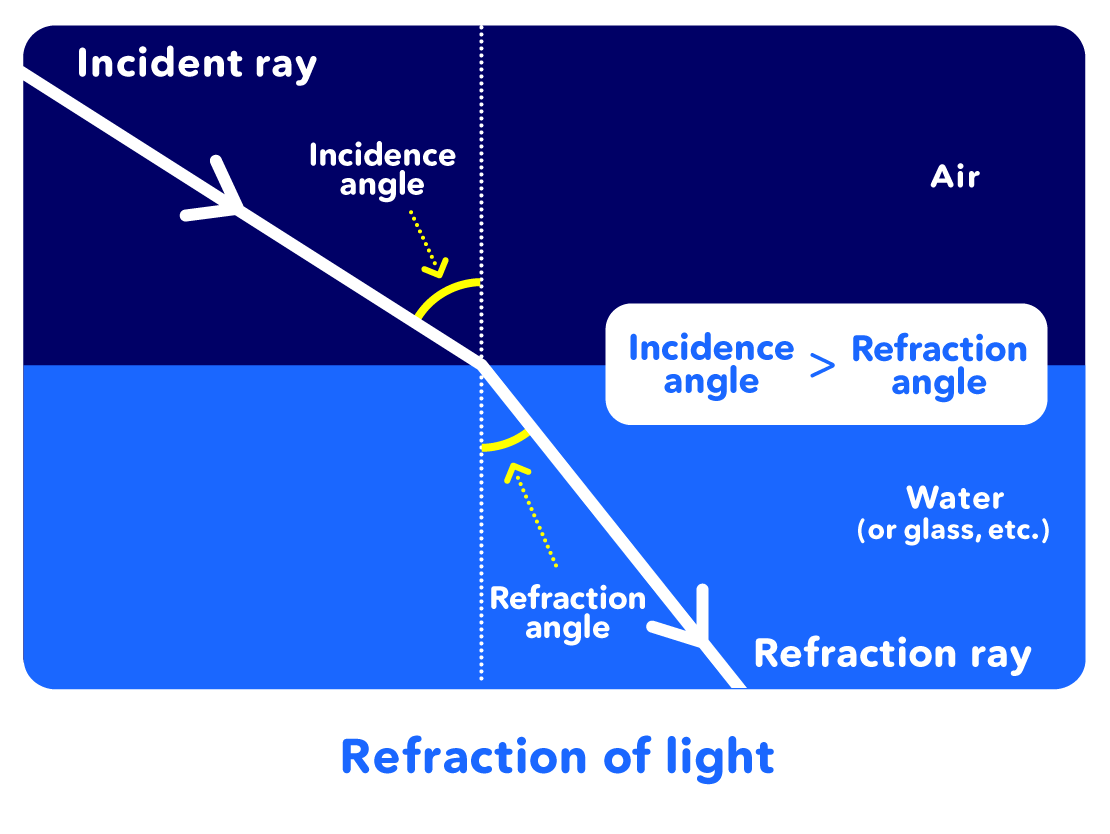
Sir Isaac Newton, an English scientist in the 17th century, thought of light as "something similar to small particles (grains)" by observing the characteristics of light. Such observations include light traveling in a straight manner and being reflected upon hitting an object, as well as the fact that light makes sharp-cut shadows. Meanwhile, Christiaan Huygens, a Dutch physicist in the 17th century, thought of light as "waves (wave motion)" by his observation of the properties of light which included the refracting and bending of light around the corners of an obstacle (which is called "diffraction") in the same way as waves. Later, Albert Einstein proved that "Light is like both a particle (photon) and a wave." Reflection and refraction of light take place due to properties that belong to both "particles" and "waves".
Lenses are used in eyeglasses, microscopes, cameras, and telescopes, and their functions are to magnify or demagnify images to be seen. A lens bends a light beam at an aimed angle and converges or diffuses bundles of rays by taking advantage of refraction taking place when the light travels from air into glass or plastic. For that purpose, the side geometry of a lens has a spherical figure, which may be roughly divided into two types. One is a convex lens with a thick central part swelled outward and curved, and the other is a concave lens with a thin central part dented inward and curved. The convex lens converges light rays traveling parallel with each other to a point using refraction of light passing through the lens. The concave lens, on the other hand, spreads light rays traveling parallel with each other.
A point where bundles of rays are converged after being refracted through a lens is called a focal point. In concave lenses, the focal point is an extension of the beams of spreading light in a reverse direction. The distance between the lens and the focal point is called focal length. This distance varies depending on the thickness of the lens and the curve of the lens surface. In microscopes, cameras, and telescopes, the focal length is adjusted by combining convex and concave lenses, enabling you to see small objects magnified or to see something far away as if they are close by.
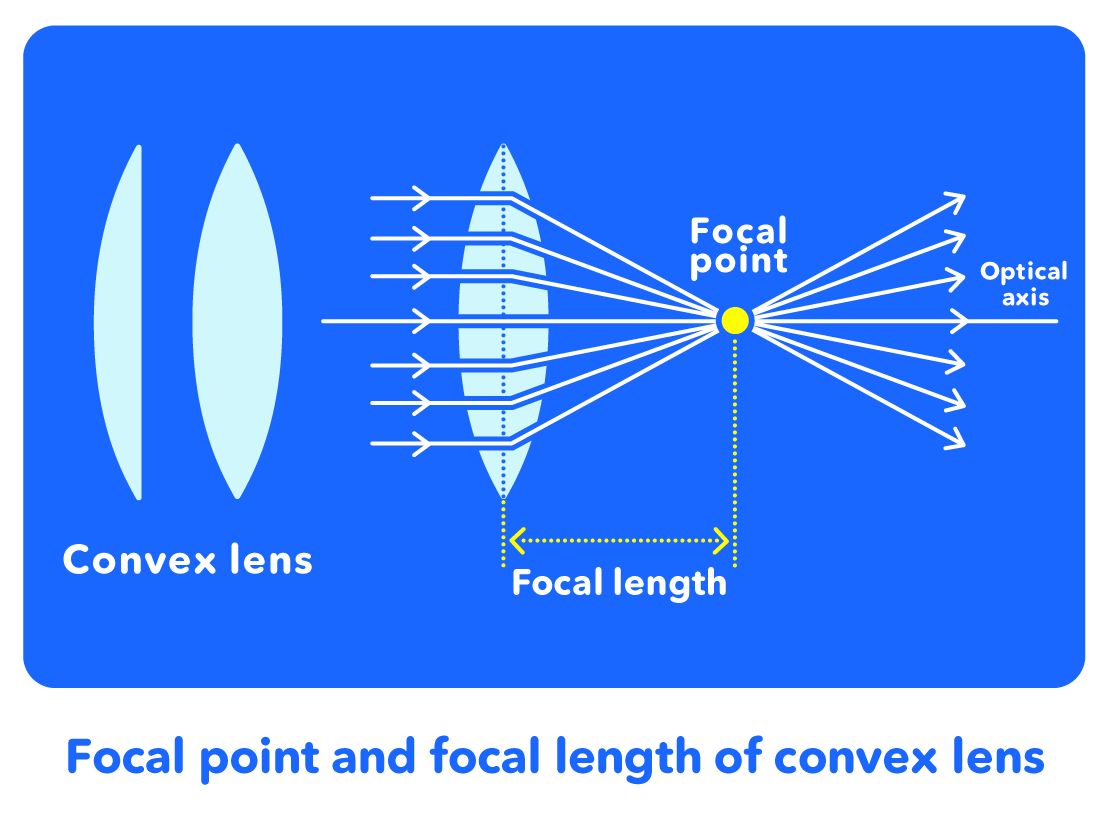
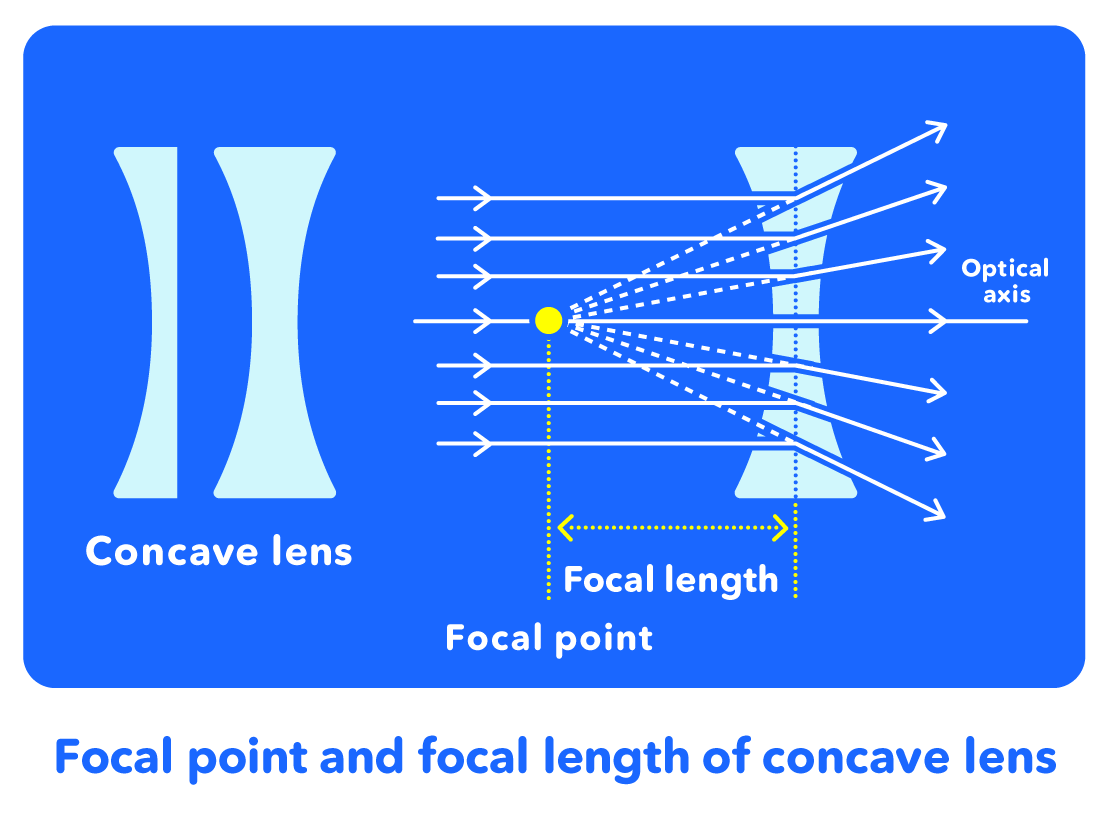
Highly transparent glasses and plastics are used as lens materials. Especially for precision apparatuses such as microscopes, extremely high-quality glass called optical glass is used. Optical glass allows light to pass even if the glass has a thickness of several kilometers.
Normal lenses are processed in the following procedure.
In addition, manufacturing of lenses with high pressure using a metal mold (press molding) may be applied in the processing of plastic lenses or some glass lenses.
These lens processing technologies are extremely sophisticated and important to support the manufacturing of precision apparatuses such as endoscopes.
★A Piece of Trivia
How precise is the lens polishing technology of Olympus? To give an example of high precise lenses, suppose a lens has the size of Tokyo Dome Stadium; a ballpark. Even an error as small as the diameter of a single hair is unacceptable. That is how precise Olympus's lens polishing technology is!
The lenses manufactured as described above are used in many different products and contribute to society. For example, lenses are attached to the distal end of a medical endoscope to be able to see the inside of human body. Olympus endoscopes help doctors to examine the inside of abdomen and to treat the sick tissues.
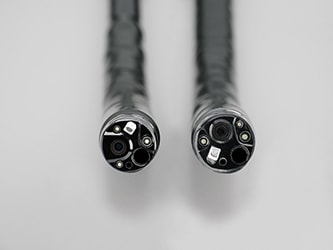
The distal end of Olympus endoscope